(Color) Swap 'Til You Drop
The power of the palette...color swapping your needlepoint with confidence
"In the world of color, every shade has its story, every hue its heart."
Changing colors around is not a new concept. How many times do we look at something throughout our day and think, “you know, if that color were just a touch lighter” or “what if this color were that color instead…” Color brings copious amounts of beauty to our world, BUT it is through the eyes of the beholder (us) that the colors we see are truly brought to life.
As with any pastime or hobby, once you “learn the ropes” you naturally become more confident in what it is you are doing. As it pertains to needlepoint, one of the natural confidence extensions (if you will) that occurs once you get the hang of things, is the ability to tweak or change a color in the canvas you are stitching. This can be something as simple as a minor adjustment to a detail in the image or something as major as changing the entire background color.
But why do it?
You already spent so much money on the canvas as is….you must have loved how it looked.
True. However, one of the hallmarks of a creative pastime like needlepoint is the freedom to flex your creativity and put *your* unique spin on a project. One need not always follow the rest of the herd. In fact, most canvases are printed on a greyscale for this exact reason - to foster the stitcher’s creativity.
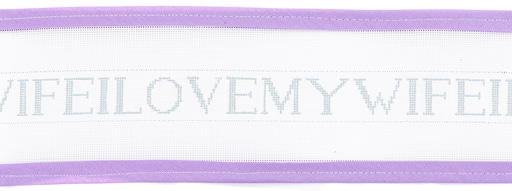
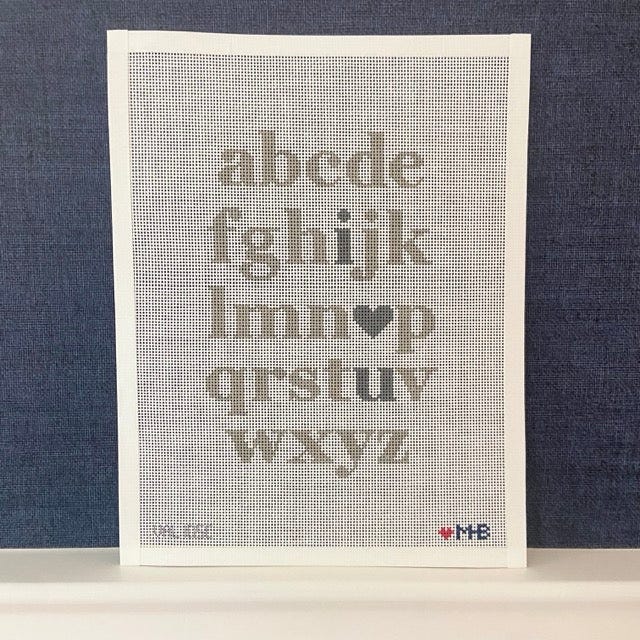
“It Seemed Easy Enough at the Time”
The first project I ever stitched was a pillow from Lycette Designs which reads “I Would Prefer Not To” (linked here; more coming on this project soon). I initially loved the colors of the canvas but as I got to the point where I began to stitch the border, something stirred up inside me and I changed the color from a light pink to a navy. It was so satisfying and I loved how it turned out.
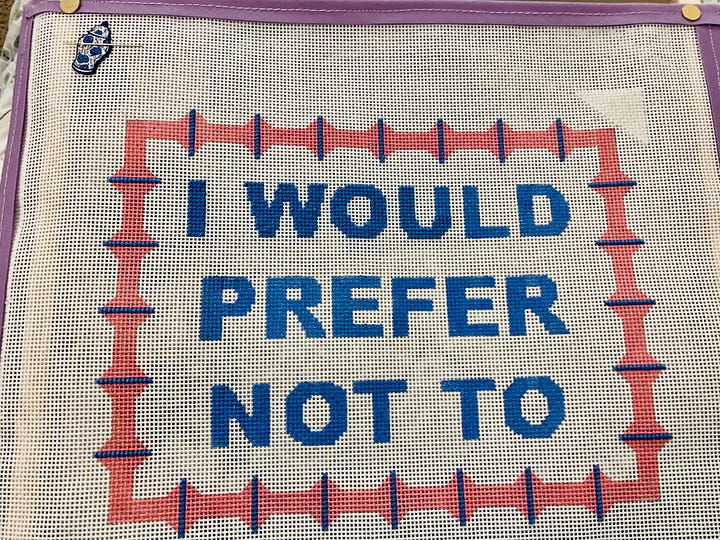
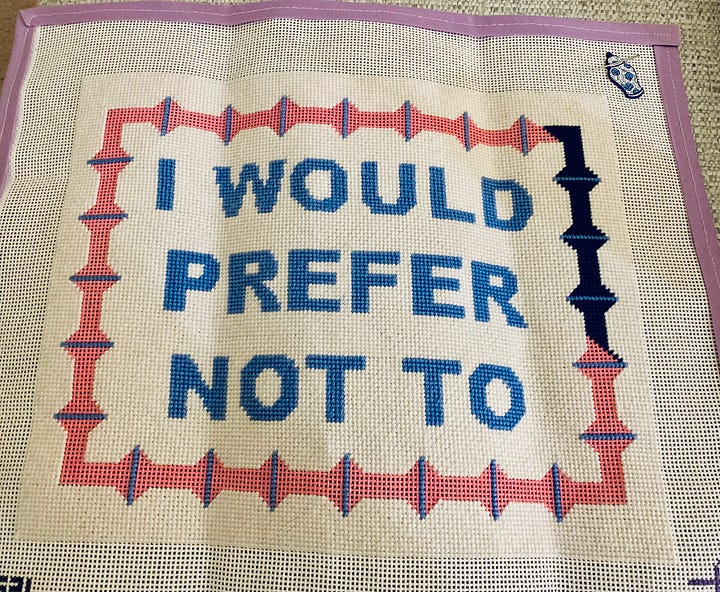
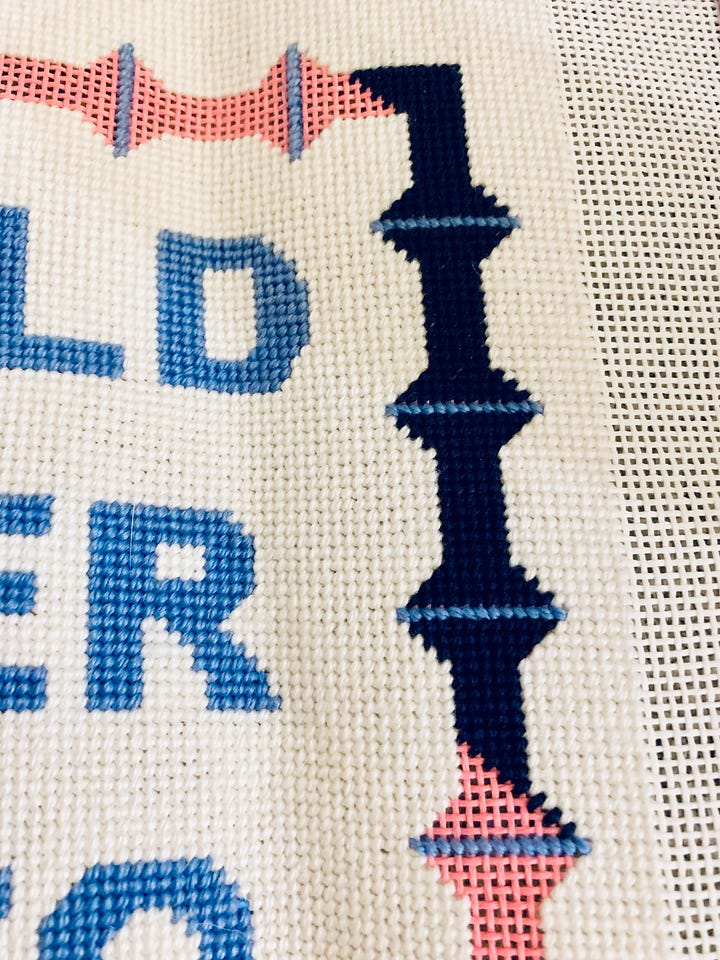
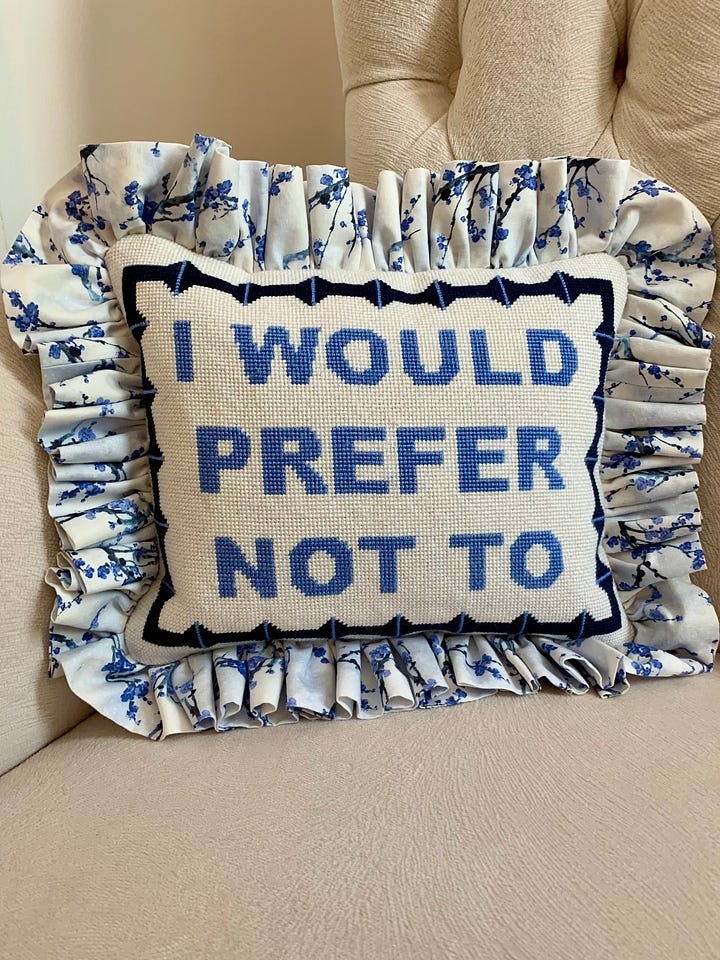
A few projects later I thought I would try my hand at color swapping again for another canvas (you can read all about it here). I had taken the fabric I wanted to use to my (then) local needlepoint shop to match the exact hues (#Fabricb4Fiber) and picked some wool threads to use to stitch the canvas. The shop was discontinuing carrying the line and the price was so good.
You can imagine my horror when I began stitching over the colors I was changing ONLY to discover that the wool threads would not adequately cover the colors in the canvas I wanted to change. Thus, the original colors “bled” through.
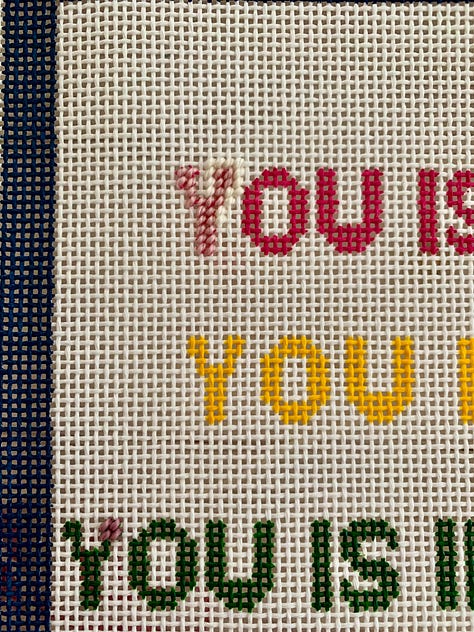
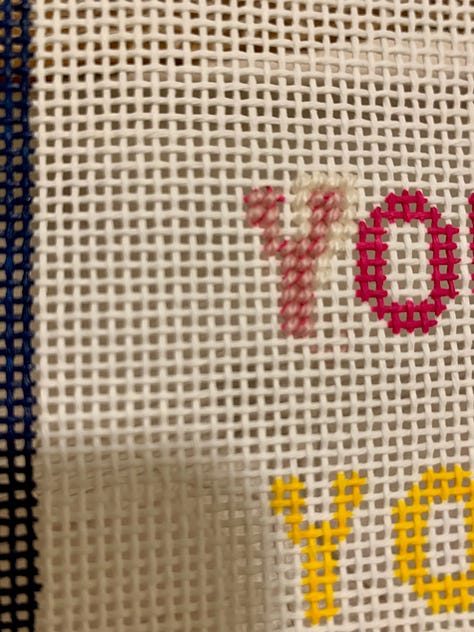
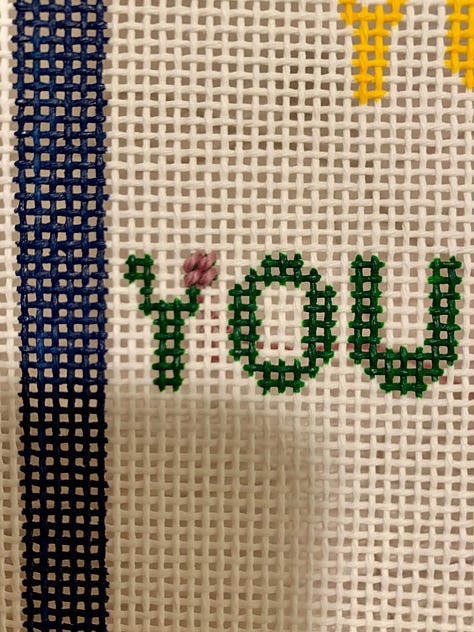
The icing on the cake? I couldn’t return a single skein since I purchased them on sale.
It was fine, I was fine (not).
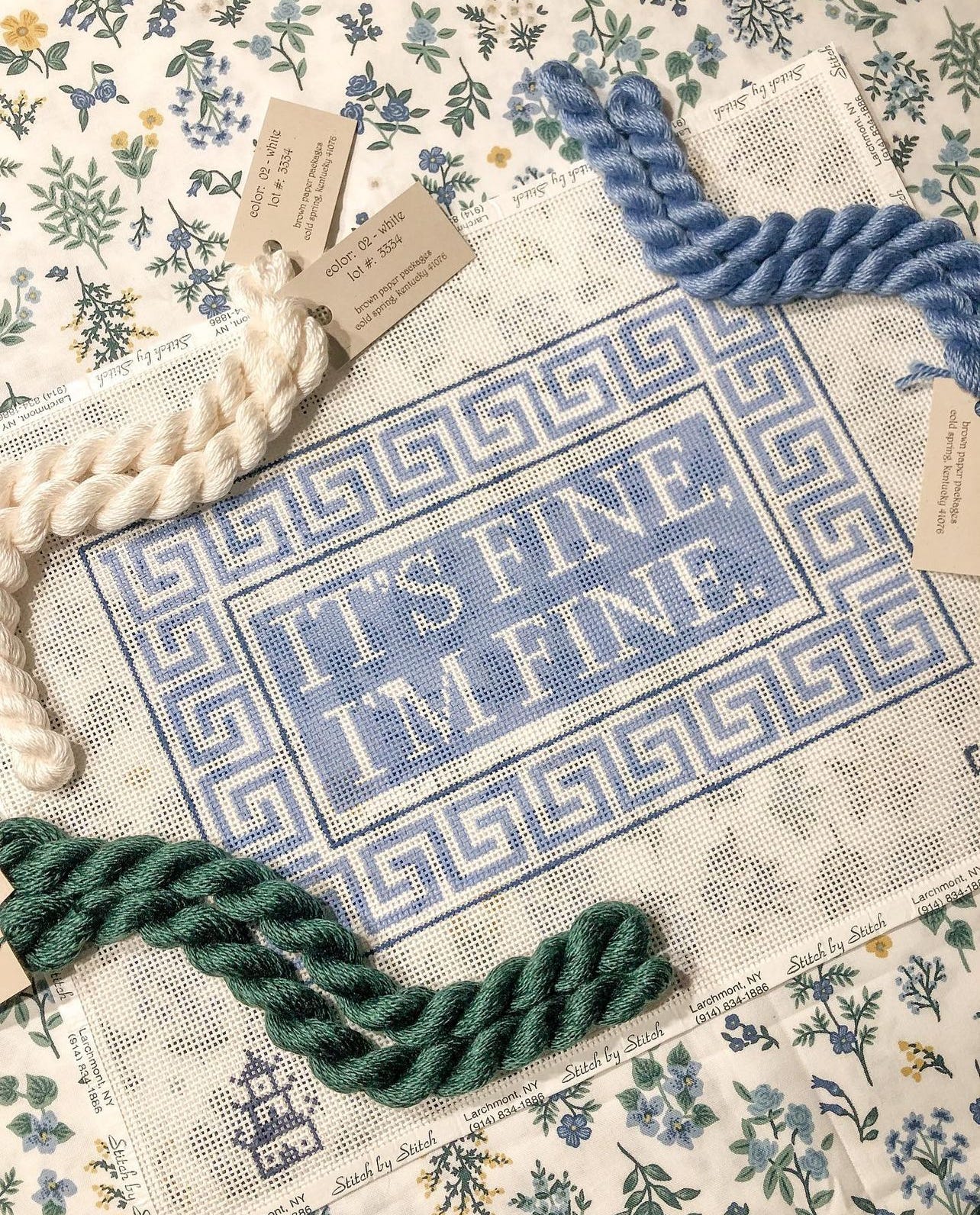
Truthfully I was the most upset at the fact that no one who had helped me at the shop pointed this out to me - that the wool would not provide adequate coverage for the color swap on my 13 mesh canvas. This would have saved me a lot of emotional duress and $$$ in the long run but such is life.
Eventually, I was able to get the correct shades in the correct hues I needed to pull off my color swap (shout out to Miss B Stitches) and the end result was so worth it.
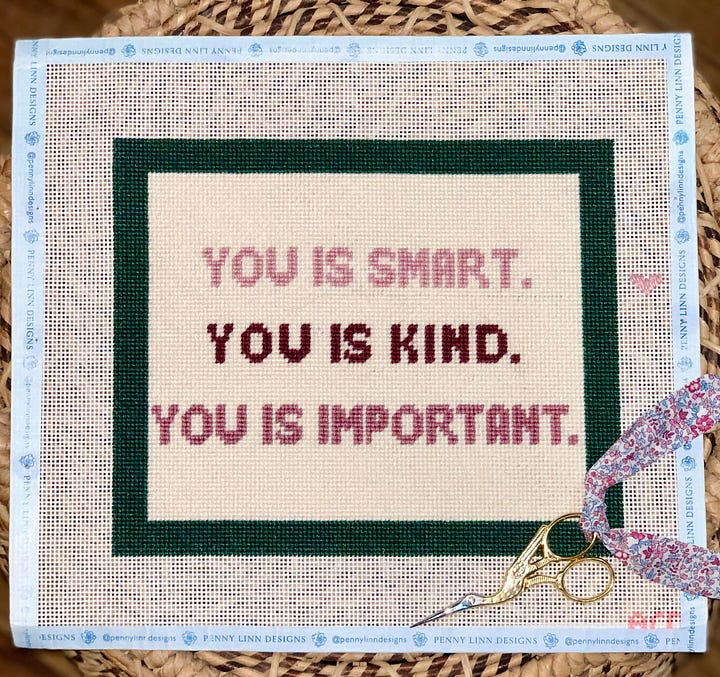
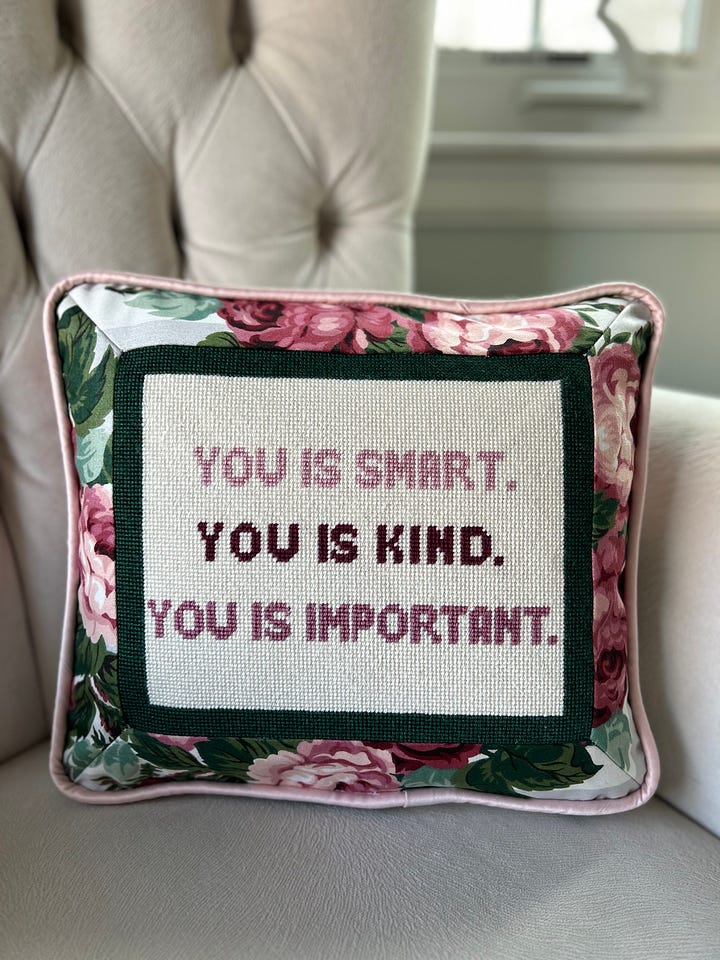
Ok so is there really a need or point to devoting an entire post to this topic?
Yes. Yes there is.
Color swapping is something that seems obvious once you realize it’s a “thing” to do. But, I remember feeling pretty hesitant trying my hand at it when I first started to needlepoint (would I offend the artist!?), and sometimes I still do.
There are many accounts on Instagram that I admire and draw inspiration from, especially as it relates to needlepoint. When I had the idea for this article, one Instagram account immediately came to mind…. Shoreline Stitcher (aka Daniella).
Daniella’s work is both rich in thought and execution. She is an avid stitcher who is trusted by many as a source of authenticity, encouragement and knowledge. I can personally vouch for each one of these attributes having worked with her on what you are about to read.
As the saying goes, we are the sum of those with which we surround ourselves. And in a technicolor world (that can sometimes be color blind), I am honored to have Daniella in my stratosphere.
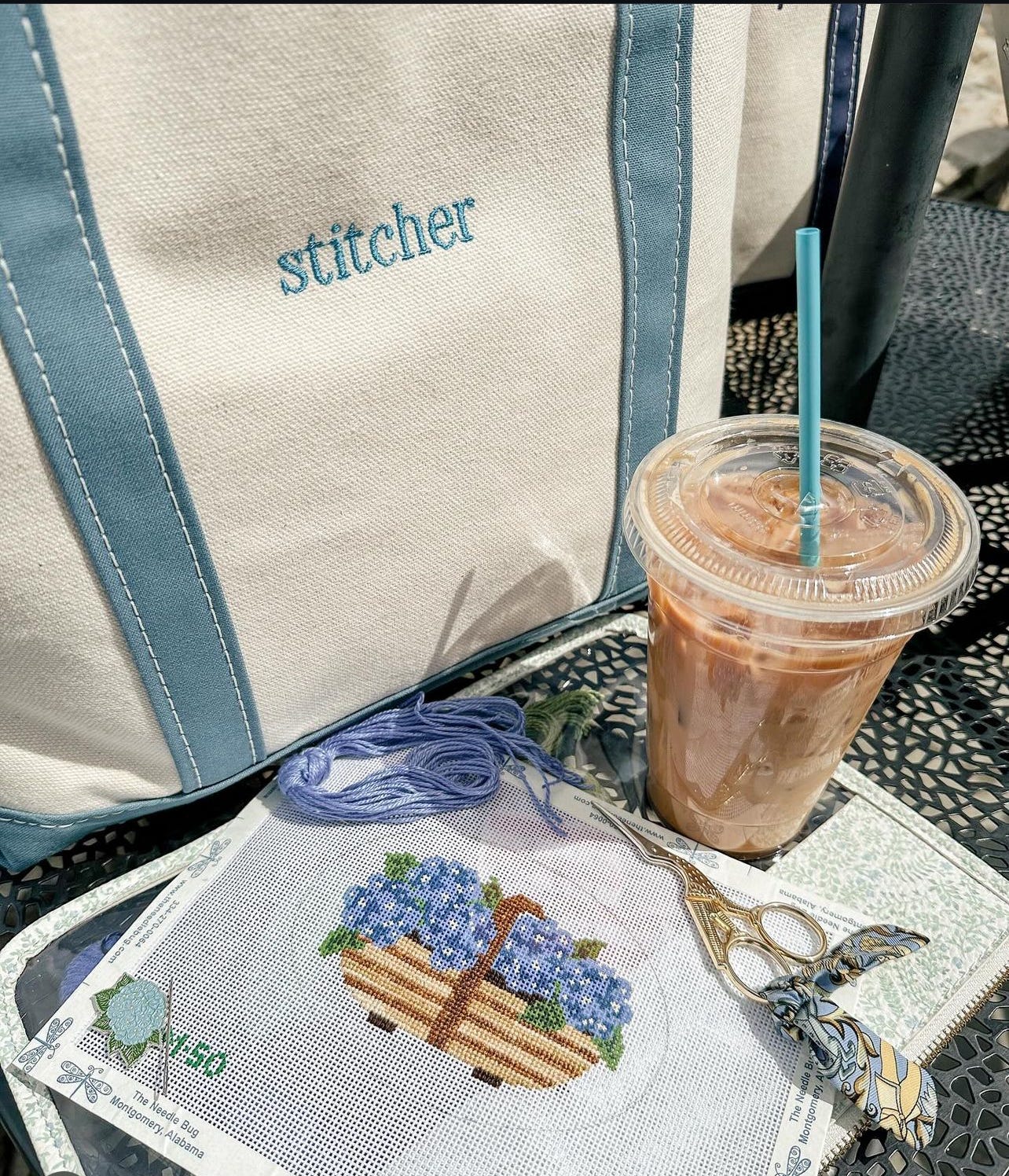
Written by the Color Swapping Queen - Daniella Golden
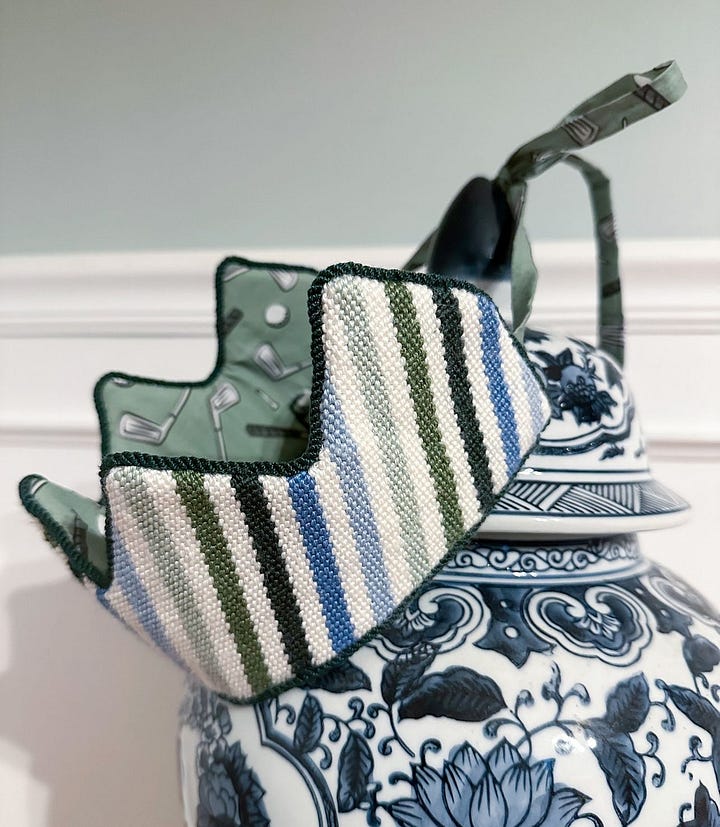
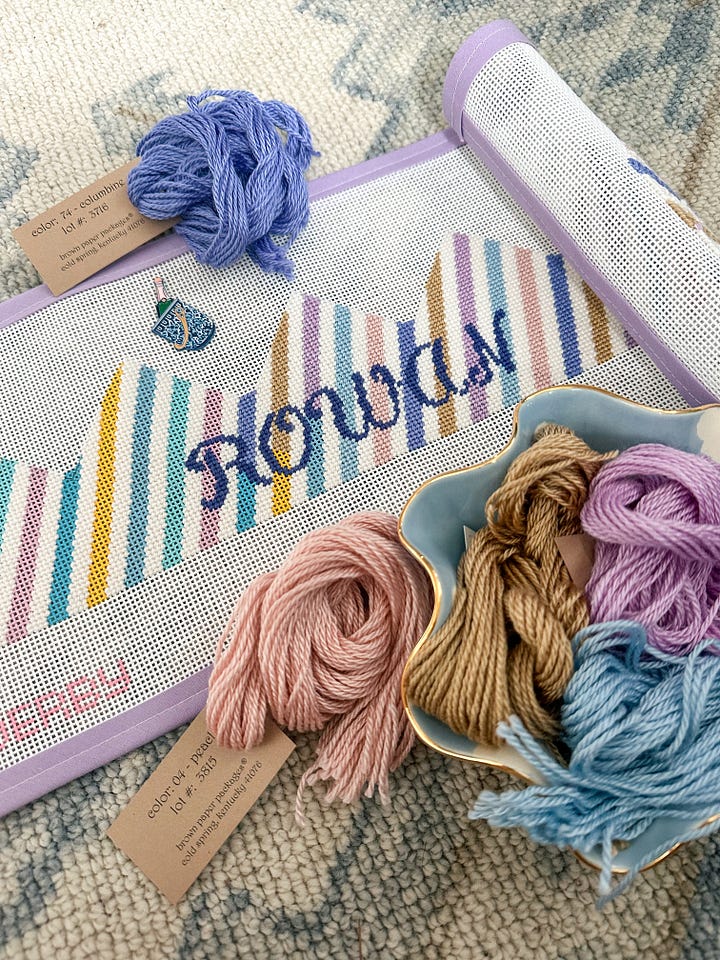
Dare to be Different
I have the privilege of being a generational, lifelong crafter. Growing up, nothing was off limits in my mother’s sewing room and any idea was worth trying. Years of sewing, embroidering and weaving finally led me to needlepoint in 2021. The first time I was complimented on a canvas I had color swapped, I was a little surprised. Of course, I was destined to switch the purple to a blue! It made sense to add a little stripe of green there instead! Fairly new to the world of needlepoint, I immediately interpreted the painted canvas as a suggestion and not a rule. Each and every design is full of unlimited possibilities.
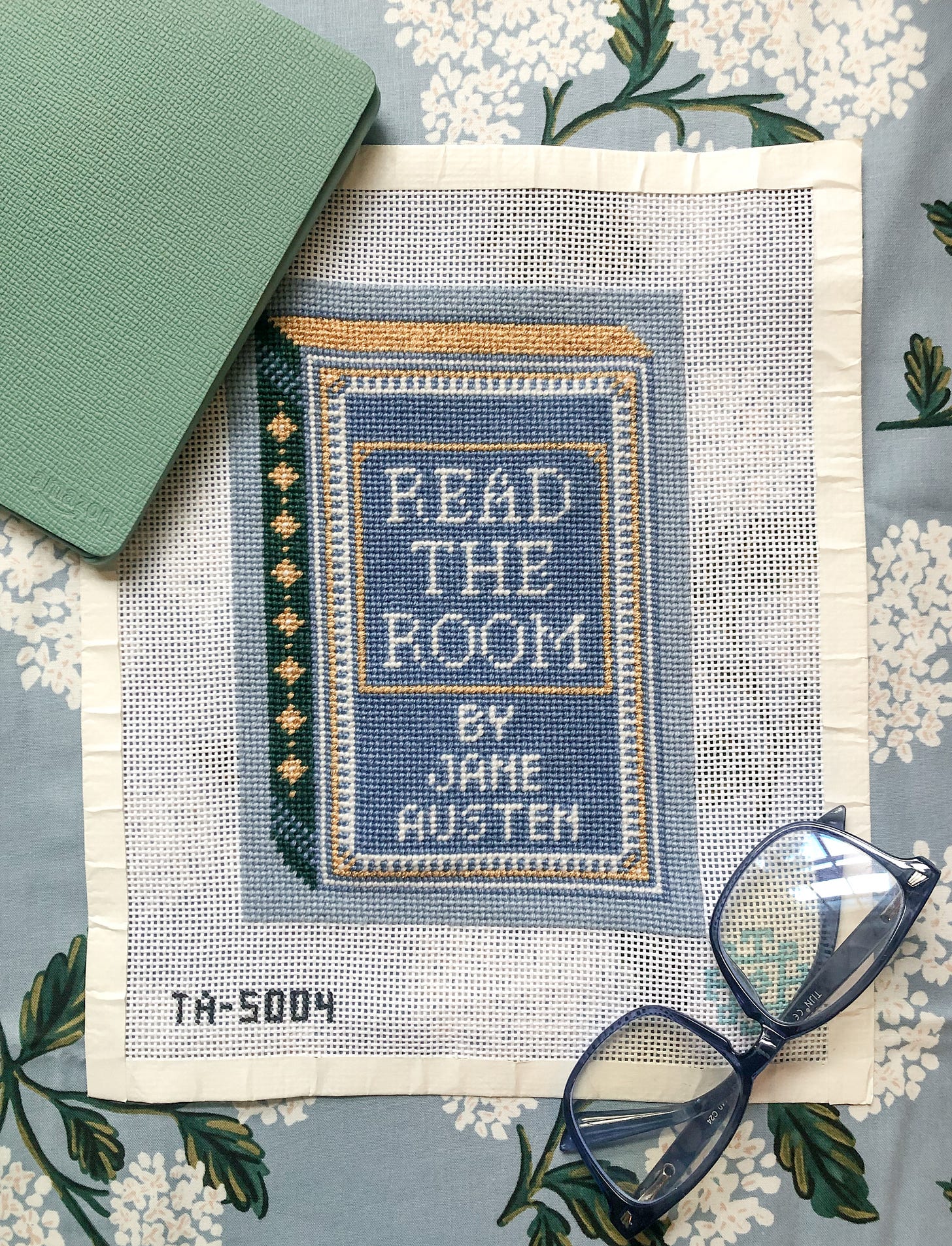
The Art of the Swap
I think there are three main reasons why a stitcher would desire to make a color swap on their canvas.
To be different! Perhaps you like the design on a canvas, but the background color just isn’t you. Maybe you would like to personalize your work to include your favorite color, or a gift for a friend in their signature shade that shows how well you know them.
Match an Existing Design Element: (see also #FabricB4Fiber)! Perhaps you have the perfect fabric in mind, or want your stitching to match a room painted in a color you love. You could want to add your dog’s white paws to a canvas that already resembles her, change the painted hair or skin color on a person to look more like you or someone you know and love. With a color swap, the opportunities are endless.
Utilizing Your Thread Stash: For example, a travel round is a small canvas that uses many different colors. If you ask your LNS to kit the canvas, you are purchasing full skeins of color for just a few tiny stitches. I know I often have a similar shade in my stash that I could substitute to save a few dollars. Before I purchase a canvas, I always think about whether I already have threads that could be a good fit. If I need to buy many new skeins to make things work, sometimes it’s a good gut check that I should hold off on an impulse buy. Choosing the same colors over and over again can also give your designs a clear color story. I have a handful of Silk and Ivory shades I keep written down that I use year after year for holiday themed projects.
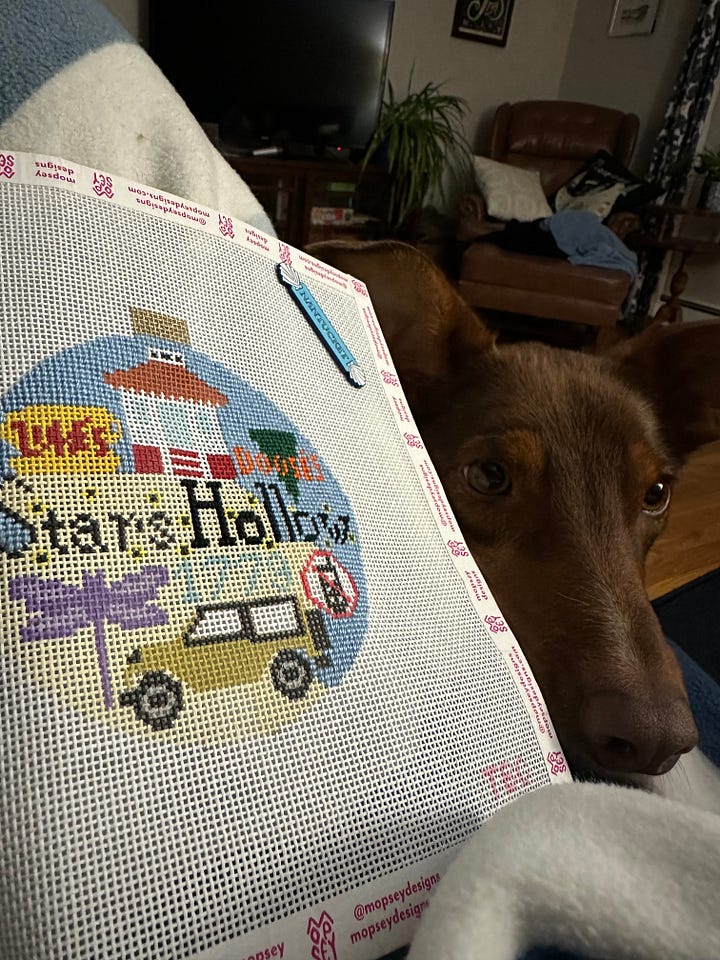
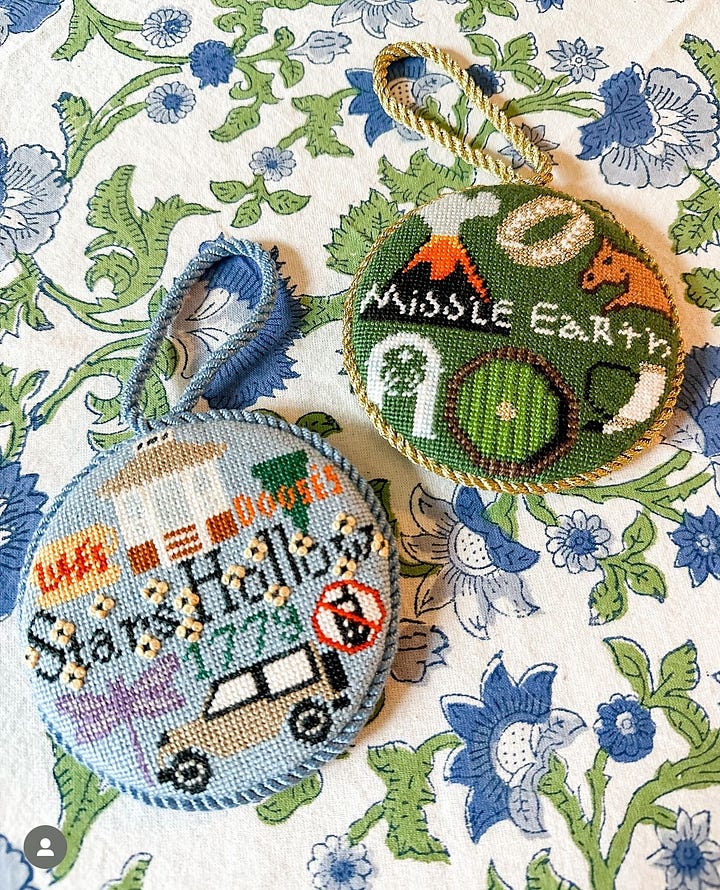
Before and After beautifully illustrating Daniella's point above
Now, let’s get into color theory and how to swap!
Making the Switch
Our key players here are hue and tone.
Hue is the interpretation of your color (i.e. red, purple, grey) and
Tone is the lightness or darkness.
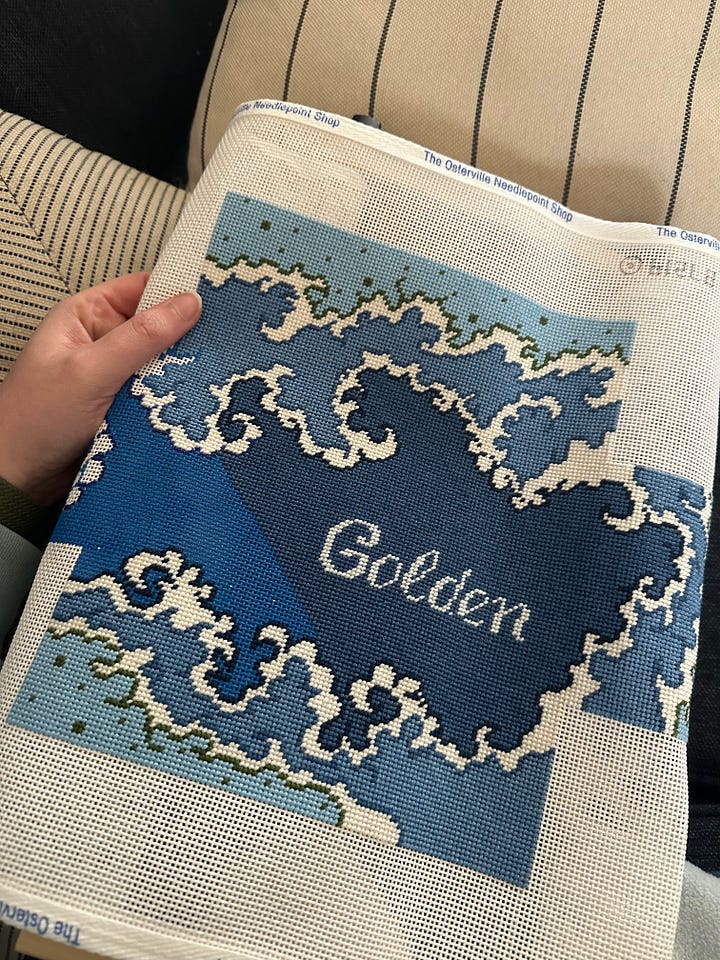
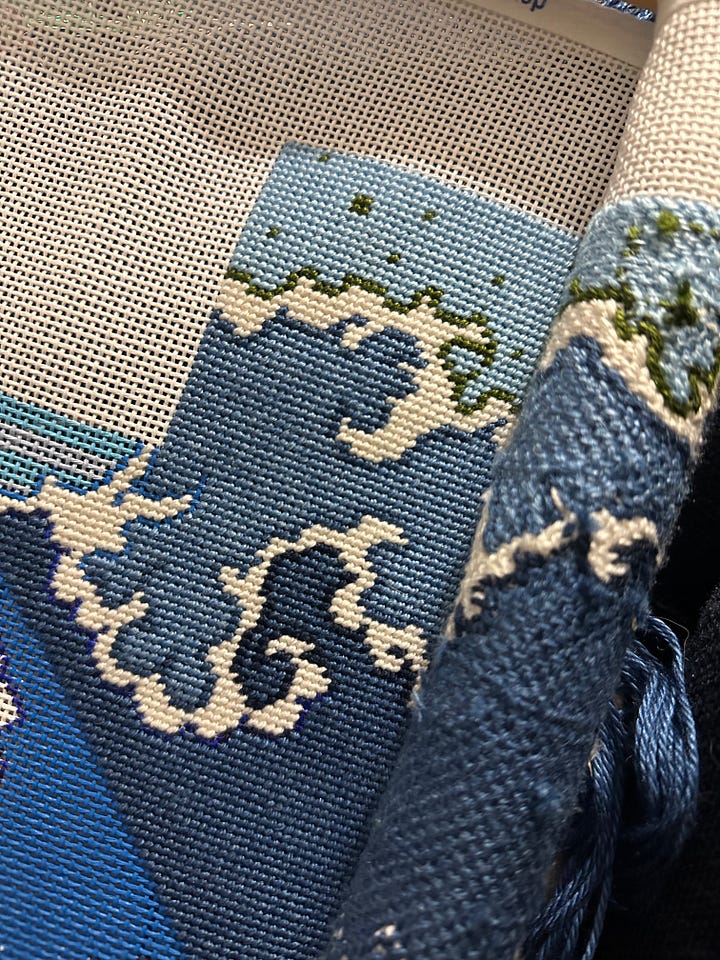
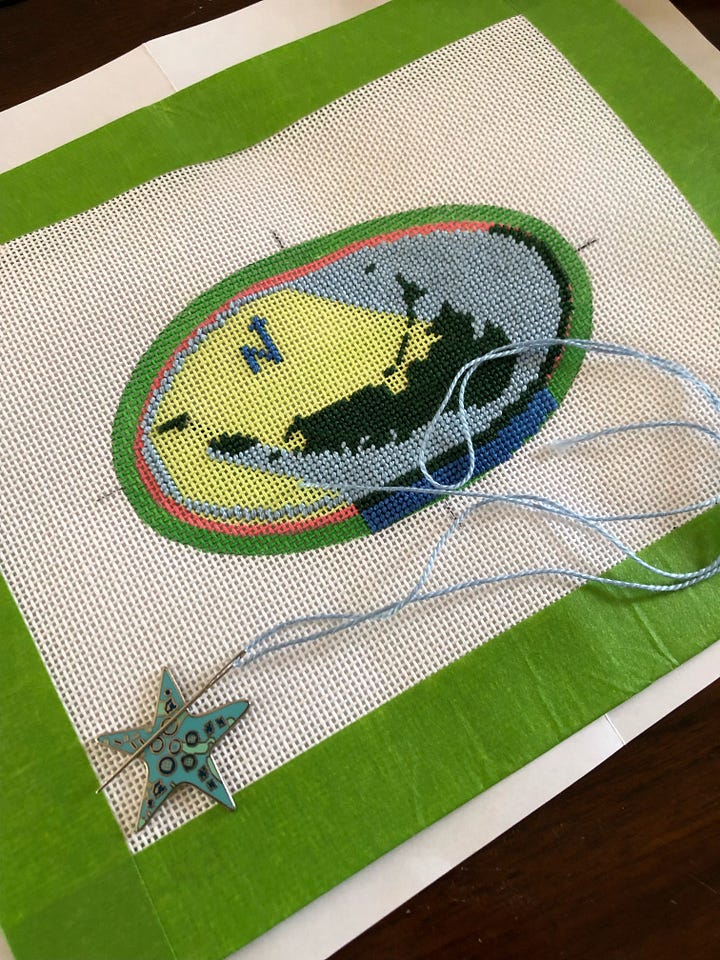
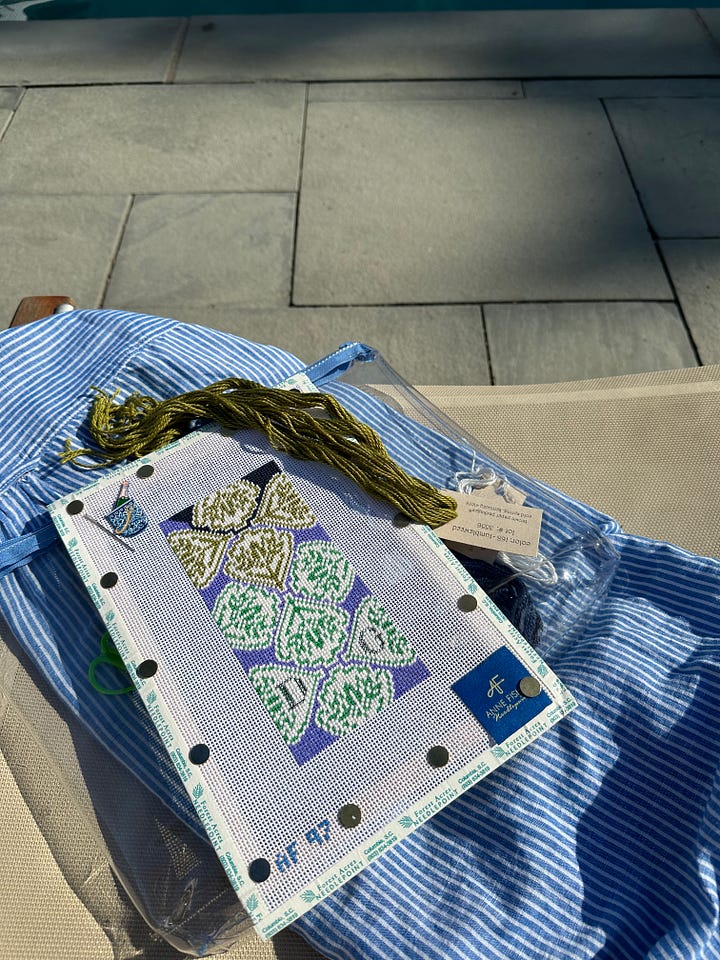
When you color swap, you want to make sure that your swapped color will cover the different color canvas underneath. A pale yellow will never cover a dark purple, seeing as they are opposite hues on the color wheel and different tones. In this case, I would recommend painting over the purple on the canvas with yellow acrylic paint before stitching.
To give yourself the largest margin for error, choose a tent stitch or a decorative stitch as well as a thread, that will provide adequate coverage (see also: basketweave).
You also want to ensure that your swap will leave you with enough contrast to see your design properly. For example, if your canvas is pink with green words and you want to swap your pink background for blue, you will need to determine whether you want your blue to be significantly lighter or darker than your choice of green. Blue and green are similar in hue, so they need that difference in value to really come through in your design.
One of my favorite tips to judge contrast is to take a photo of your stitching and add a grayscale filter. If you can still see your design well in black and white, you’ve nailed your contrast!
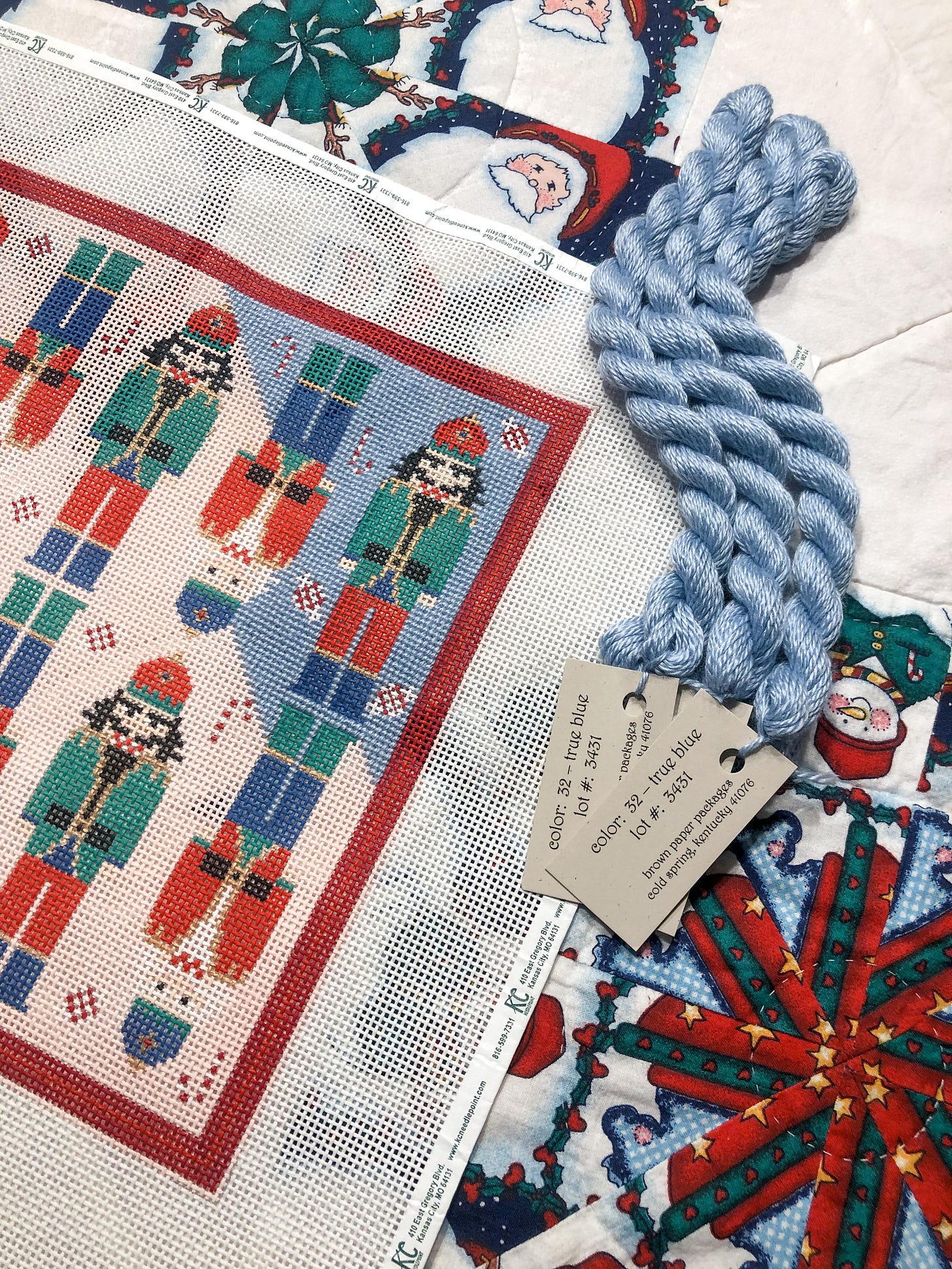
Questions about swapping colors on your next project? Want to show a fabulous finished item you already color swapped? We would *love* to see it. Tag The Finishing School Blog & Shoreline Stitcher on Instagram so we can draw inspiration from and share your unique creativity with others.
Through this post, we (Emily and Daniella) hope to challenge you to think broadly about your future projects and create unique pieces you truly love.
We hope that you leave this blog post feeling as though the time you took to read or listen to it was time well spent. Let this also serve as your reminder that whatever it is that visually brings you joy (fabric, color, texture, whatever), don’t you dare let it go.
There is so much incredible creativity surrounding us and just as much within us.
P.S. *To hear more about Daniella’s needlepoint journey, be sure to check out her feature with our dear friend


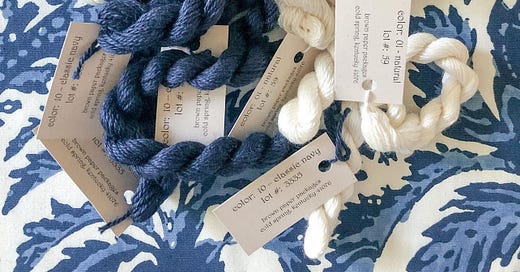





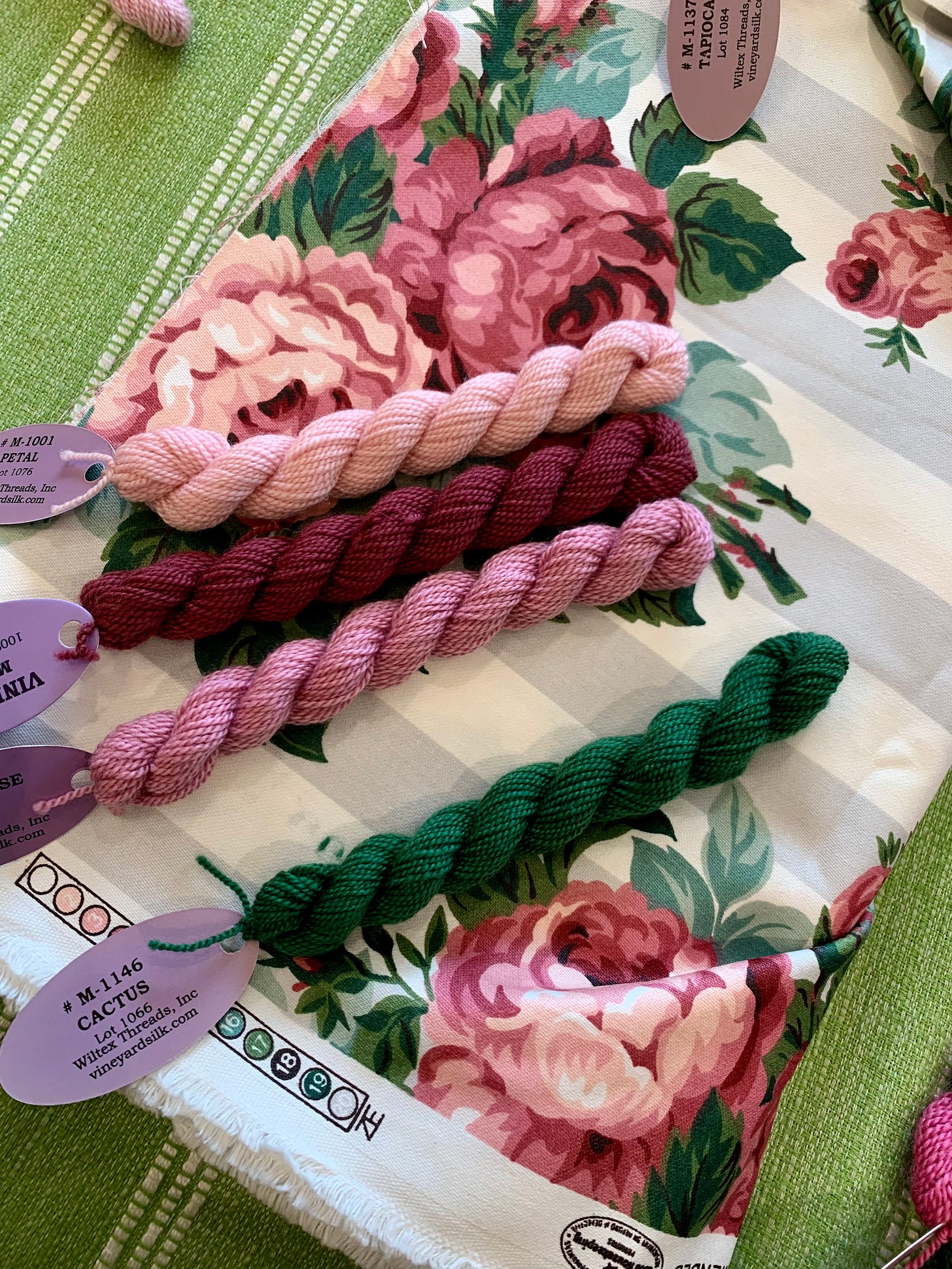






While I don’t live near my LNS, I usually buy my canvas and fibers at different times. I need some time to look at the canvas and think about what colors I want, and compare it to what I already have!